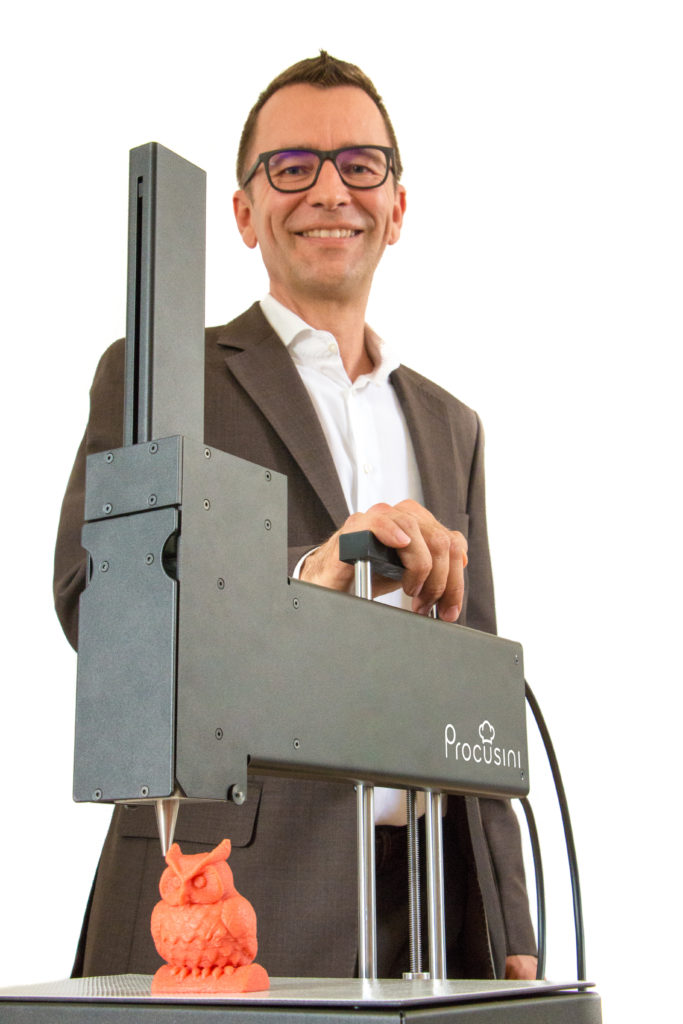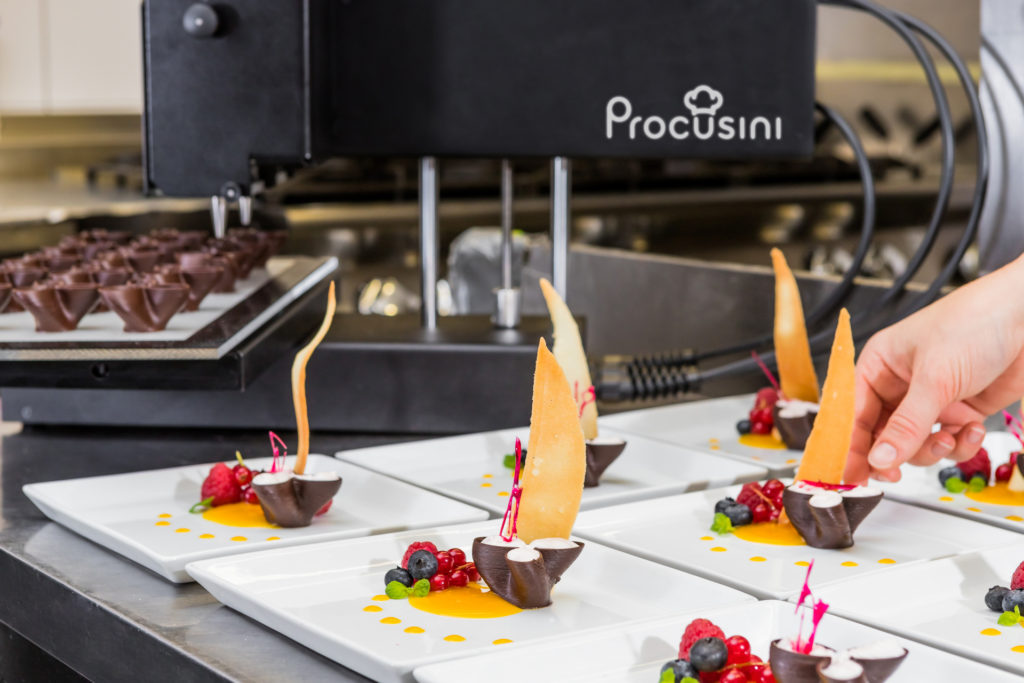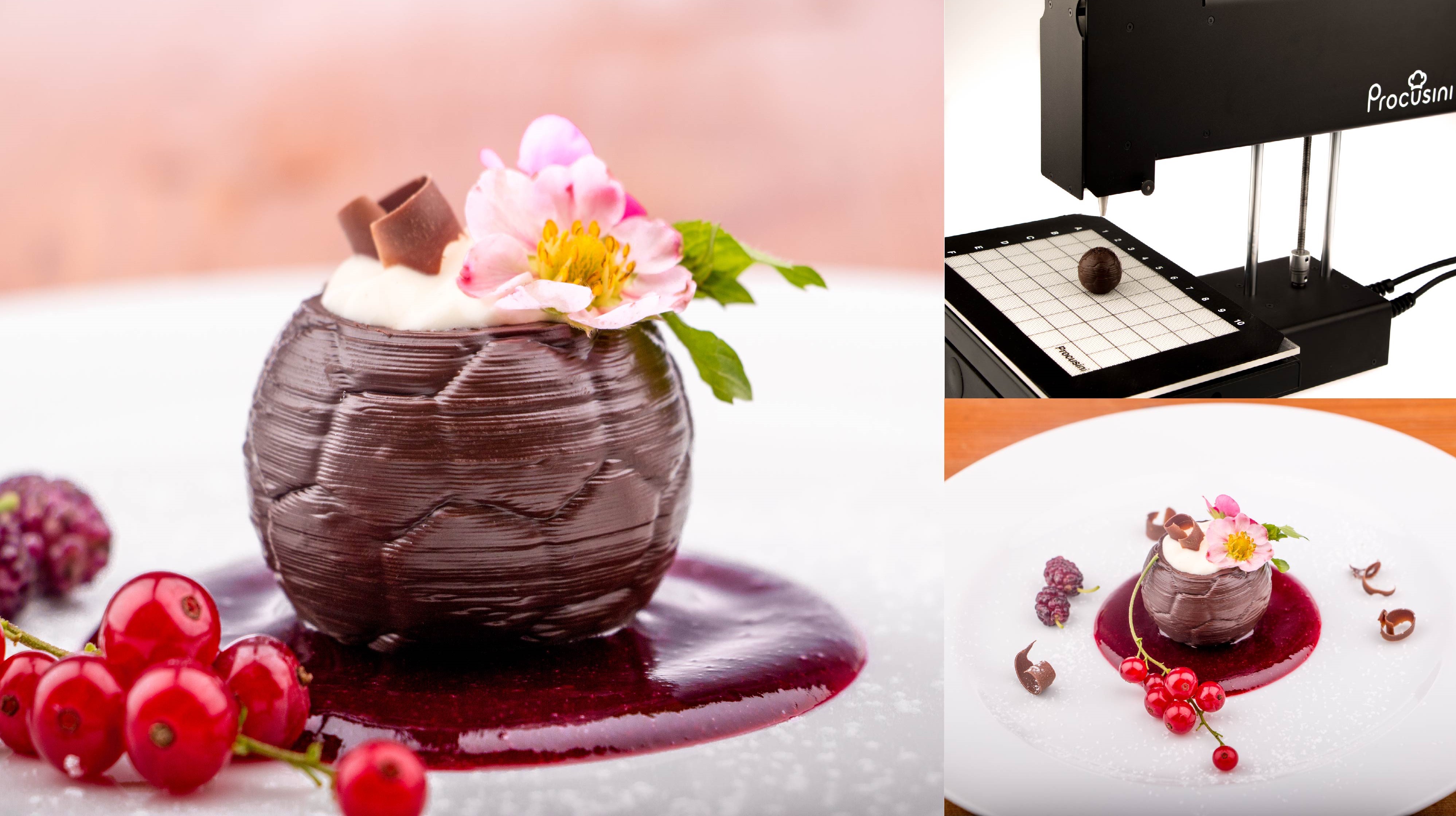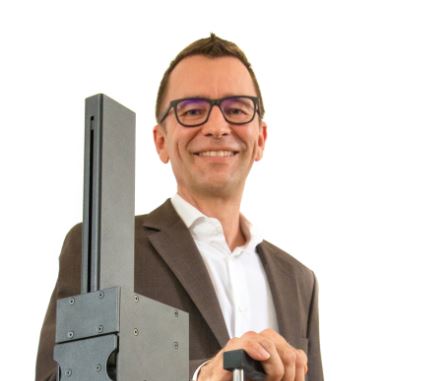 Who does not like the appetizing presentation of food on plate? Or simply the possibility to be more creative while preparing dishes?
Who does not like the appetizing presentation of food on plate? Or simply the possibility to be more creative while preparing dishes?
Print2Taste has made it its main goal and aims at meeting these requirements for both food lovers and chefs. Founded in 2014, Print2Taste is the spin-off company of the University of Weihenstephan-Triesdorf located in the South of Germany. With more than 15 people in its team today, many of them being food scientists, the company created the brand Procusini, a 3D food printing system that masters food as product.
It is our pleasure to hear more about the company’s activities from the CEO Gerd Funk. #OpinionoftheWeek
What are the different activities of Print2Taste?
Our activities include three main types of offering. Firstly, we provide customers with our 3D food printer Procusini, which is a complete Plug-and-Play system. Secondly, users can get access to the Procusini’s portfolio of printable food. Lastly, via the Procusini club, a web platform, users can discover all applications of the Procusini. The platform makes it easier for them to use our products.
What made you believe in 3D Food Printing?
In 2012 at the University, we carried out an experience that marked a milestone and led to the creation of our company. After a first experimentation with marzipan, some trials were performed with plastic printers that have been adapted in order to determine how technology can be combined with food.
It should be noted that our university really focuses on food research so it was kind of obvious to push this field forward and discover how far we could combine it with technology.
A few times later, we came out with the Procusini, our first 3D food printing system and the spin-off has really taken shape with 4 people at the beginning.
I remember how people were amazed at the beginning (and how they are still amazed today when seeing our 3D food printing system in action) but at the beginning, they were wondering if we could really use food in such way and what type of food could be used.
Today, our food portfolio includes a wide range of foods: pasta, chocolate, marzipan and fondant. Moreover, the user can also explore his/her own food with our systems.

One thing is certain, those who rely on 3D Food printing are always satisfied with the results obtained.
Who is your primary target?
Hotels, catering companies, restaurants and confectionaries.
How do you perceive the 3D food printing market?
It’s a market which is still at its very early stage. With regards to our company, Print2Taste is a growing company. We are expanding our activities worldwide. We have been attending exhibitions around the world (Dubai, Milan, Singapore, Taiwan) and in Germany as well.
What we realized is that most of our customers are not aware of the 3D technology and it is always impressive, exciting and even fancy to discover something new.
Furthermore, given the affordability of the price (1985 €), the 3D technology definitely opens a new world and a new way of cooking to chefs.
In terms of prospects of development, could we expect Print2taste to open a restaurant dedicated to 3D food printing?
That would be a very interesting way to introduce 3D Food printing but it should be noted that a chef in a professional kitchen will not only cook 3D printed food. Our aim is really to educate and to communicate to chefs that if 3D printed food is part of their menu, they can bring a real added value on every plate, even though the rest of the dishes is manually cooked. A 3D Food printing system can really serve either a creative or a personal use.
 Your last word?
Your last word?
If you are interested in learning more about our Procusini, do not hesitate to sign up for one of our seminars and webinars.
For further information about 3D Printing, follow us on our social networks and subscribe to our newsletter! Would you like to subscribe to 3D Adept Mag? Would you like to be featured in the next issue of our digital magazine? Send us an email at contact@3dadept.com






